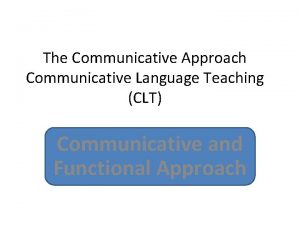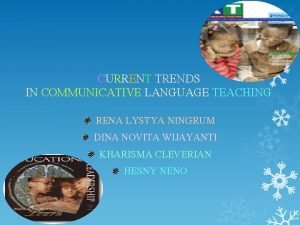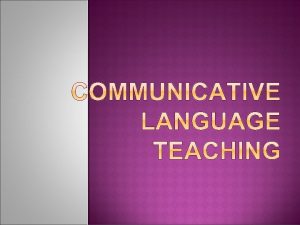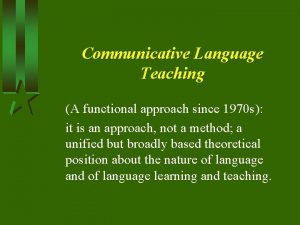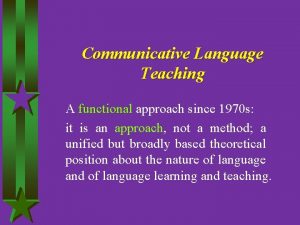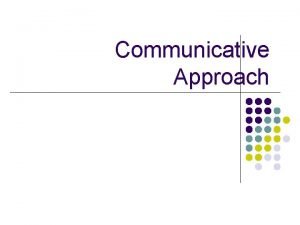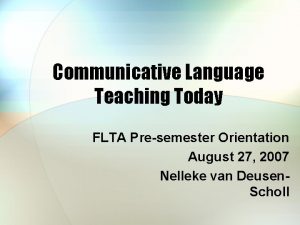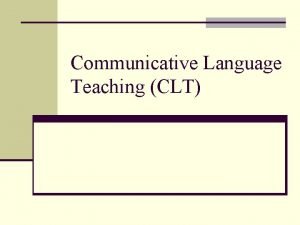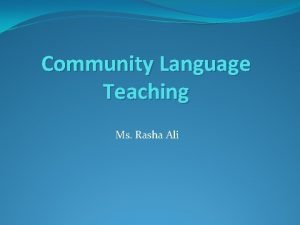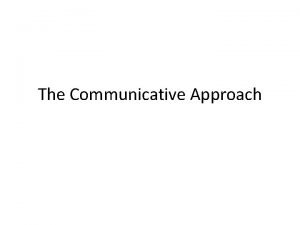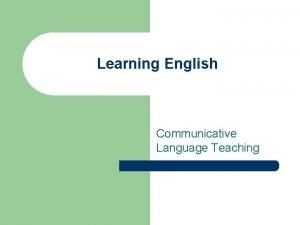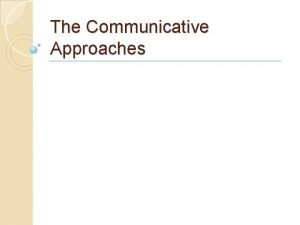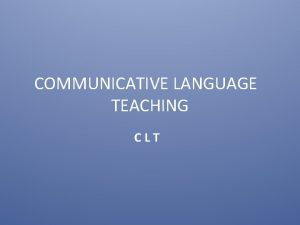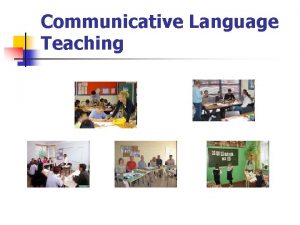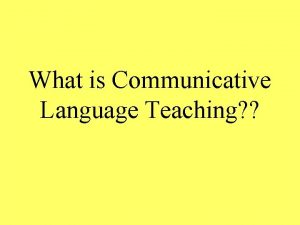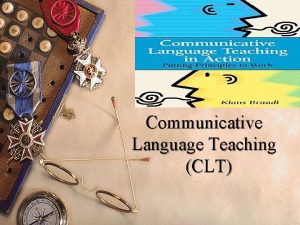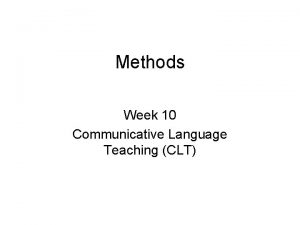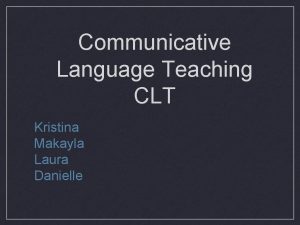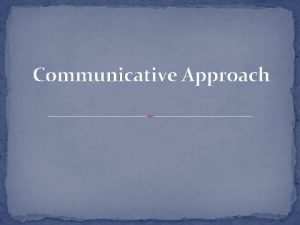Communicative Language Teaching CLT p 14 27 History












- Slides: 12

Communicative Language Teaching (CLT) p. 14 -27

History of CLT • Reaction to inadequacies of four skills model Active Skills Passive Skills Speaking Reading Writing Listening • Did not illustrate negotiation of meaning 2

Negotiation of Meaning • An effort to reach mutual comprehension through: – restating – clarifying – and confirming information • Active/Passive dichotomy • Does not capture interaction 3

Example of Negotiating meaning • Watch this clip. • What features of negotiating meaning to do you see? • Restating information • Clarifying information • Confirming information • Negotiating Meaning Video 4

Communicative Competence (CC) • Ability to function in communicative setting – Grammar knowledge PLUS • • Gestures Intonation Strategies for making oneself understood Risk-taking to attempt communication (Shrum & Glisan, 2005) 5

Four Components of CC • Grammatical- form – past tense of run is ran – To make a noun plural add –s • coat/coats • Knowledge of rules ≠ ability to use 6

Four Components of CC • Discourse Competence- oral/written text level • Poems, sportscasts, compositions, essays, research papers • Top-down processing – Thematic understanding – Overall interpretation • Bottom-up processing -Unit level -Collection 7

Sociocultural Competence *Social rules *Nonverbal language, turn-taking, appropriacy of content *Relies heavily on CONTEXT * Cartoon courtesy of : Some kind of strange blog retrieved 5/24/2011 http: //kostylomusic. blogspot. com/2010/05/dont-youhate-all-those-clever-people. html 8

Four Components of CC • Strategic Competence- coping strategies • Communication despite deficiencies in other competencies • Ex: what do you do when you forget the word you want to say? 9

Putting it all together • • • Five components Bottom line Be creative Know your learners Consider your context and training Seek support of others 10

Grammar and CLT • Concerns about accuracy • Revisits form vs. use debates 11

You should remember • Communicative Competence is – Communication within a meaningful context – More than grammar, but grammar is important – Making meaning using grammatical forms – “Integration of form-focused exercises with meaning-focused experience. ” – Dr. Jack Richards 12
 Communicative approach شرح
Communicative approach شرح Lystya
Lystya Background of communicative language teaching
Background of communicative language teaching Okanjo meaning
Okanjo meaning Communicative language teaching
Communicative language teaching Goals of clt
Goals of clt Communicative language teaching today
Communicative language teaching today Language
Language Picture strip story in communicative language teaching
Picture strip story in communicative language teaching Communicative approach is
Communicative approach is Communicative language teaching
Communicative language teaching History of language teaching methodology
History of language teaching methodology What is clt?
What is clt?
